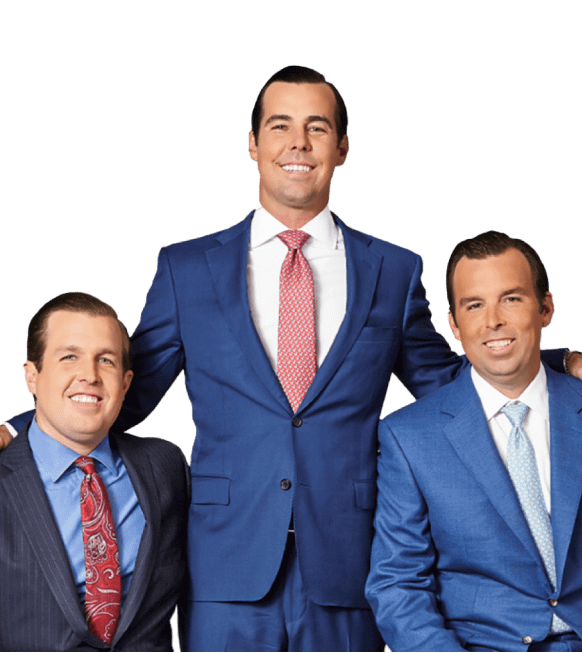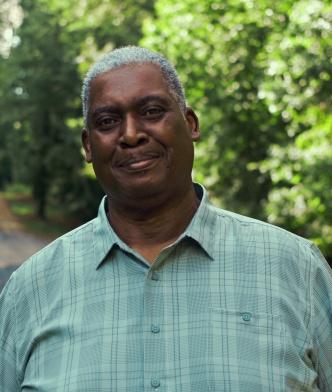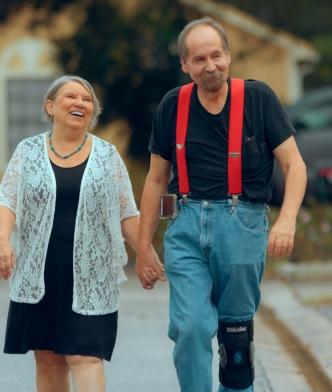How to Collect and Preserve Evidence for a Personal Injury Lawsuit
How to Collect and Preserve Evidence for a Personal Injury Lawsuit
Rating Overview
- The Fee Is Free Unless You Win®.
- America's Largest Injury Law Firm™
- Protecting Families Since 1988
- 20 Billion+ Won
- 1,000+ Lawyers Nationwide
Free Case Evaluation

The attorneys featured above are licensed in Florida. For a full list of attorneys in your state please visit our attorney page.
How to Collect and Preserve Evidence for a Personal Injury Lawsuit
If you become injured because of another party’s behavior or negligence, you have the option of pursuing a legal claim against them. After all, injury victims typically incur many significant losses, and depending on the nature of the accident or injury, you may be owed a wide range of financial payments.
But to recover the full amount to which you are entitled, it is critical to collect relevant evidence. Thankfully, a skilled personal injury lawyer can collect and use this evidence to pursue the money you are owed.
Unscrupulous individuals and companies may try to downplay the harm you experienced, but do not allow a negligent party to deny you the compensation you need to move forward.
To discuss the role of evidence in your accident claim, reach out to the personal injury lawyers at Morgan & Morgan. Our team of skilled legal professionals will build a powerful case on your behalf with the evidence available and can leverage our experience and legal knowledge to fight for the compensation you deserve.
Let our friendly staff schedule a no-cost consultation to discuss your legal options. Complete the simple contact form on our website to arrange your free case evaluation today.
Common Types of Personal Injury Lawsuits
The type of evidence needed to win a tort claim depends, in part, on the nature of the accident or injury. After all, every instance of a personal injury is unique. Still, some mishaps are more likely to serve as grounds for a legal case.
Some of the typical accidents and injuries resulting in tort claims include:
Motor Vehicle Collisions
Car accidents are one of the main types of personal injury cases. These incidents can range in severity from minor fender-benders to catastrophic collisions.
Traffic collisions can cause drivers and passengers to suffer the following injuries:
- Whiplash
- Fractures and broken bones
- Lacerations and deep cuts
- Traumatic brain injuries
When a crash results in physical damage, the injured party may be able to file a claim against the other driver or their insurance company.
Car accident victims have the right to seek financial compensation for their costs and losses. So if you have been involved in a car accident, do your best to collect the following evidence:
- Contact and insurance information for all involved motorists
- License plate numbers
- VINs of the involved vehicles
- Photos and videos of the crash and resulting injuries
- Police accident report
- Resulting medical records
- Notes detailing your personal experience
Collecting this evidence following a traffic accident can help you build a compelling case that you are owed damages. If you are unsure about what evidence to collect or how to collect it, contact a Morgan & Morgan personal injury lawyer for guidance.
Falling Accidents
Falling accidents occur when someone slips or trips and falls on another party's property. In order to function as grounds for a legal claim, the fall must be due to hazardous conditions.
Common examples of hazardous conditions on a property owner’s premises include:
- Wet or slick floors with no signage
- Uneven sidewalks or walkways
- Poorly maintained premises
- Broken railings
- Cracked or uneven stairs
Falling accidents can cause victims to experience a wide range of potentially serious injuries. Some examples are:
- Broken bones
- Head and neck injuries
- Spine and back damage
The falling accident victim may be able to file a claim against the property owner to seek financial repayment for their injuries and damages. However, it is vital to collect compelling evidence that the property owner’s negligence was the cause of your injury.
Relevant evidence in a falling accident claim may include:
- Photographs and videos of the location of the fall
- Statements by eyewitnesses to the incident
- Official incident reports (for falls that occur on commercial properties)
- Property inspection and maintenance records
- CCTV footage capturing the fall
- Expert witness testimony
Falling on another person’s property is not a guarantee of a successful tort claim. Victims must show that the property owner or operator was negligent in their duties. They must also prove that the negligence resulted in the injury in question.
Medical Malpractice
Medical negligence or malpractice happens when a healthcare provider or facility fails to provide an appropriate level of care. When this results in harm to a patient, the victim may have the legal right to financial recovery.
Many different actions may constitute medical malpractice, such as:
- Misdiagnosis or failure to provide a diagnosis
- Surgical errors
- Injuries resulting from the birthing process
- Anesthesia errors
- Incorrect prescriptions or dosages
Medical malpractice claims can be complex and difficult to prove, so in instances of medical malpractice, it is important to preserve evidence proving that the individual or facility was negligent.
Make sure to speak with a personal injury lawyer at Morgan and Morgan to understand the role of evidence in your claim. Some of the most typical examples of evidence in malpractice claims include:
- Medical documents and records
- Doctor’s notes
- Expert witness testimony
- Hospital procedures and written policies
Many medical institutions have access to significant legal resources to protect themselves following an incident of malpractice. Because of this, it is important for victims to hire a seasoned personal injury lawyer to fight for them.
Dog Attacks
Dog bites can result in severe injuries for victims. Typical examples of resulting physical injuries include lacerations, infections, and permanent scarring.
In many dog attack cases, the animal’s owner may be liable for the victim’s injuries. The laws and statutes regarding liability vary by state. In some cases, the injured party may be able to obtain financial repayment for their medical bills, lost wages, and other losses. Speak with a seasoned attorney about the types of evidence needed to prove negligence in your dog bite case.
Product Liability
Product liability claims arise when a faulty or defective product causes harm. This can include defective consumer products, faulty medical devices, and hazardous prescription drugs.
The victim of the defective product may be able to file a claim against the manufacturer, distributor, or retailer. The facts of the case will determine which parties are legally responsible for the resulting damage.
Assault and Battery
Assault and battery cases happen when someone purposefully causes harm to another person. While assault usually results in criminal charges against the perpetrator, the victim may also choose to pursue a tort claim against them.
These claims can be brought against both individuals and businesses. For example, a nightclub or bar may be liable if they fail to provide adequate security to prevent violent incidents.
Lawsuits and other legal claims can arise from a wide range of injuries and mishaps. If you have been harmed because of the negligence of another party, consult with an experienced personal injury lawyer as soon as possible.
A seasoned legal professional will help you determine whether you have a valid claim. You may be able to file a suit to recover compensation for your costs and losses.
How to Gather Evidence Following an Accident or Injury
In order to file a personal injury claim and have the best chance of winning maximum compensation, it is critical to collect relevant evidence as quickly as possible. As time passes, it will become more difficult to gather the information and documents you need.
Some of the steps you should take to collect and present evidence effectively include:
Seek a Medical Assessment
If you have been injured, seek medical attention as soon as possible. You should take this step even if you do not believe you are injured.
This will guarantee that you receive proper medical care, but it will also create a medical record that will serve as evidence in your case.
Document the Scene of the Incident
You should always take photographs or videos of the scene of the accident if you are able to, making sure to include hazards or dangerous conditions that contributed to the mishap. Don’t forget to also capture any damage to property, including vehicles.
Collect Statements From Witnesses
If there were witnesses to the accident that caused your injuries, try to obtain their names and information. Witness statements can provide important information about the cause of the accident and which parties are liable.
Gather Relevant Documentation
Keep records of all documents and reports related to your accident or injury. Also, keep a list of any missed income or other financial losses resulting from the accident.
Obtain Expert Opinions
Depending on the type of accident or injury, you may need to obtain expert opinions to support your position. For instance, if you were hurt in a car accident, you might need an accident reconstruction expert to testify on your behalf.
Present the Evidence
Once you have collected all the available evidence, a personal injury lawyer can help you present it effectively. This may include:
- Reconstructing a detailed timeline of events
- Creating visual aids to bolster your claim
- Presenting eyewitness or expert testimony
Filing a successful personal injury claim requires a comprehensive approach to collecting and preserving evidence. Working with an experienced Morgan and Morgan attorney will give you the best chance of securing financial recovery.
How it works
It's easy to get started.
The Fee Is Free™. Only pay if we win.
Results may vary depending on your particular facts and legal circumstances.
Step 1
Submit
your claimWith a free case evaluation, submitting your case is easy with Morgan & Morgan.
Step 2
We take
actionOur dedicated team gets to work investigating your claim.
Step 3
We fight
for youIf we take on the case, our team fights to get you the results you deserve.
FAQ
Get answers to commonly asked questions about our legal services and learn how we may assist you with your case.
What Are Examples of Harms That Injury Victims Can Pursue Compensation For?
The types and amount of financial damages that victims can recover through a tort claim will depend on many factors. Some of the most common examples of harm in personal injury claims that you can recover compensation for include:
- Medical bills and debt
- Expected costs of future medical care
- Lost wages and income
- Decreased earning capacity
- Pain and suffering
- Emotional anguish and turmoil
- Post-traumatic stress disorder
- Property damage—such as vehicular repair costs
Any losses that result from your personal injury can influence the value of your claim. The team at Morgan & Morgan will review the facts of your case to calculate appropriate damages.
Do I Need a Lawyer With Courtroom Experience?
Most personal injury claims do not require a trial. Typically, tort claims are settled by the involved parties without the need to go to court.
However, some injury cases do necessitate courtroom appearances. For that reason, you should hire an attorney with courtroom experience. Fortunately, the team at Morgan and Morgan has ample experience in presenting tort cases before judges and juries.
Speak With a Personal Injury Lawyer From Morgan and Morgan
When you need premier legal counsel, reach out to America’s largest injury firm: Morgan & Morgan. Our personal injury lawyers will fight diligently to recover the compensation you’re entitled to.
Complete the online contact form on our firm’s website to schedule a free consultation about your accident or personal injury claim.






